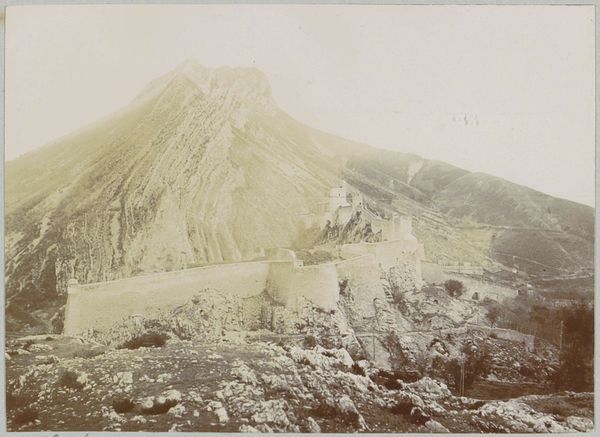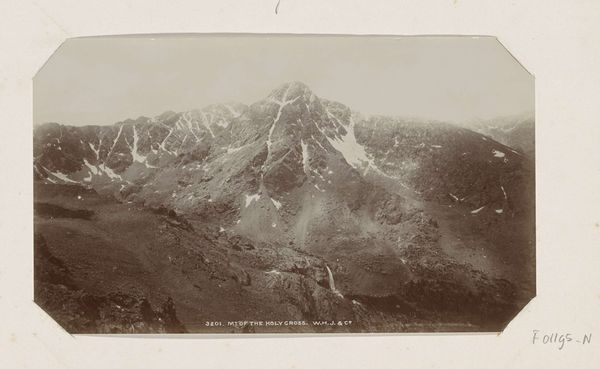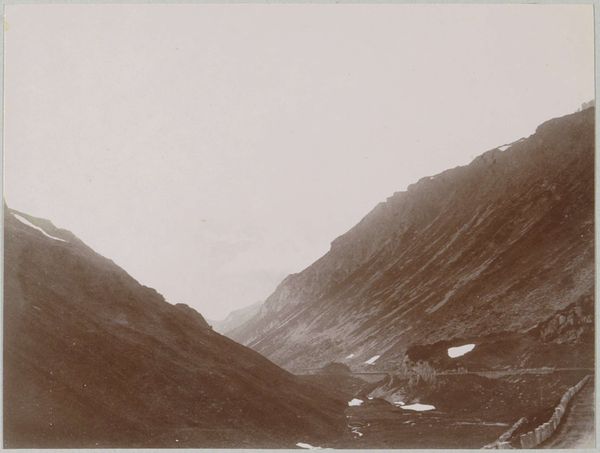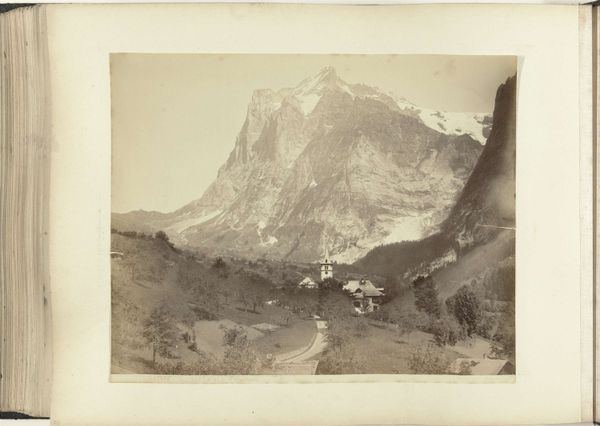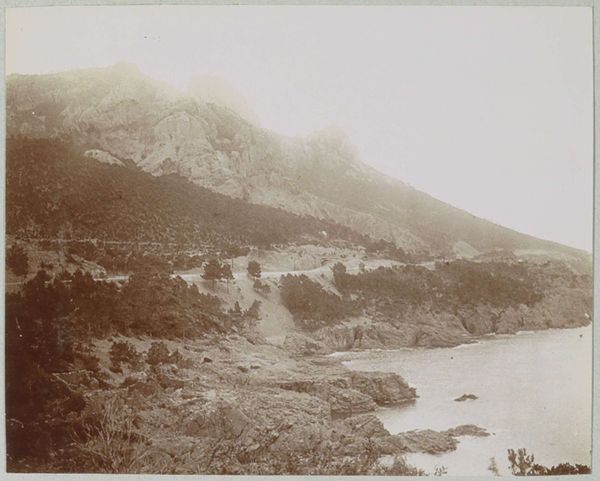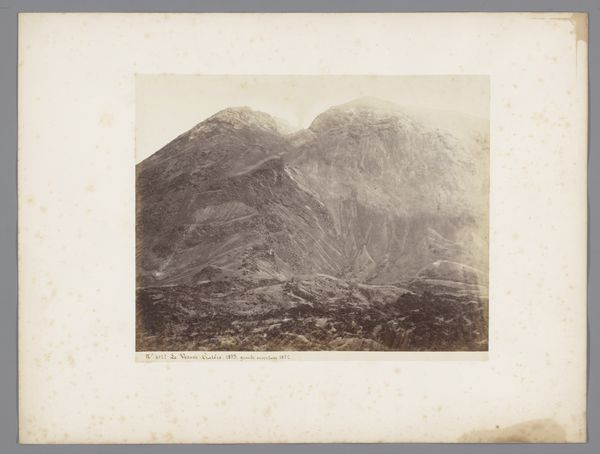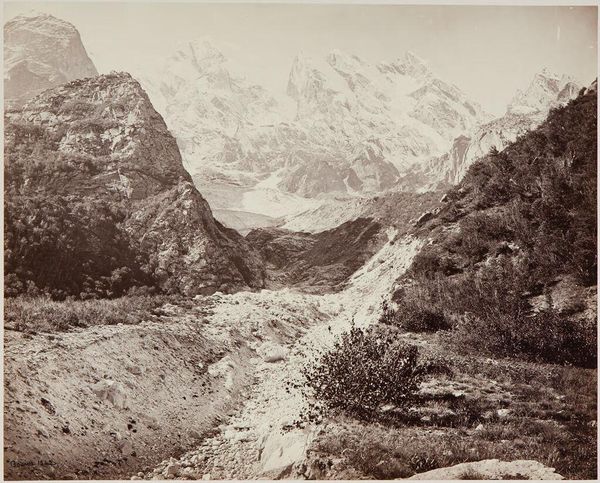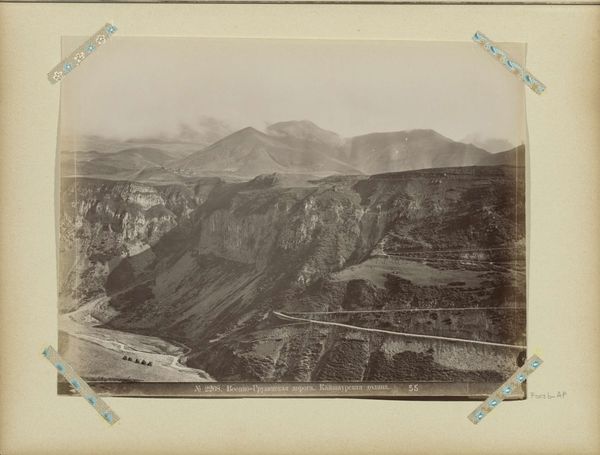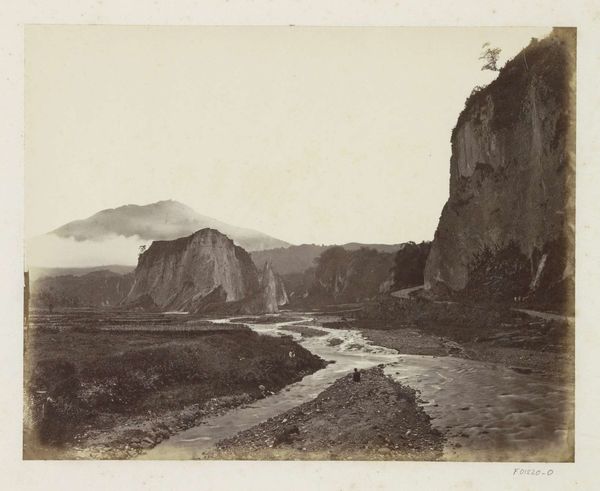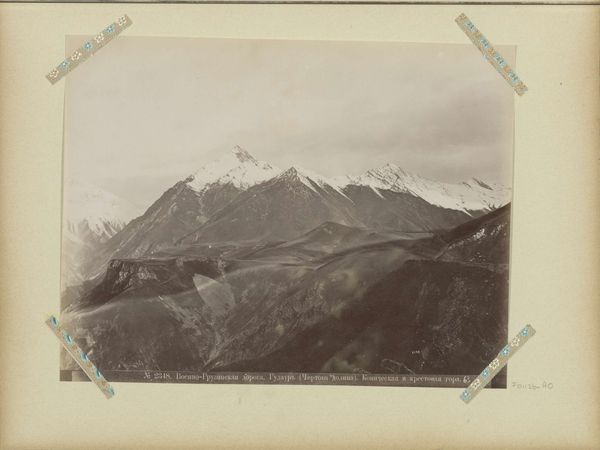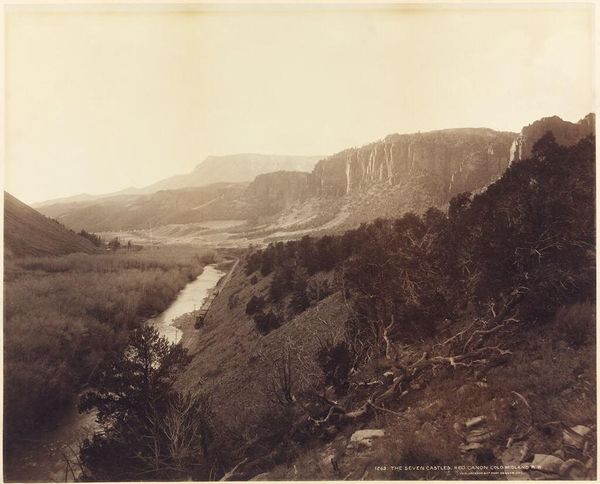
Dimensions: height 79 mm, width 110 mm, height 314 mm, width 450 mm
Copyright: Rijks Museum: Open Domain
Paul Güssfeldt made this photograph of a Norwegian landscape, probably in the late 19th century. It's a simple image but it speaks to the rapid growth of tourism in that period, and the way photographers helped to shape the visual culture of the picturesque. Consider how the image creates meaning through visual codes. The steep mountain, the cascading water, and the untouched wilderness are all well-established tropes, and were especially popular in the romantic era. During this period, improved transport infrastructure meant that people were able to travel with relative ease and encounter these awe-inspiring views for themselves. Güssfeldt was German, and his choice of subject reflects how the countries of northern Europe became popular destinations for those seeking an escape from the industrial world. We can look at travel guides, railway posters, and other sources, to understand how the culture of tourism shaped the production and reception of art.
Comments
No comments
Be the first to comment and join the conversation on the ultimate creative platform.

